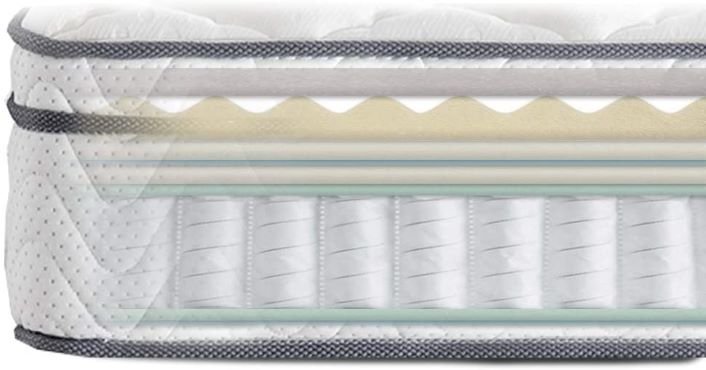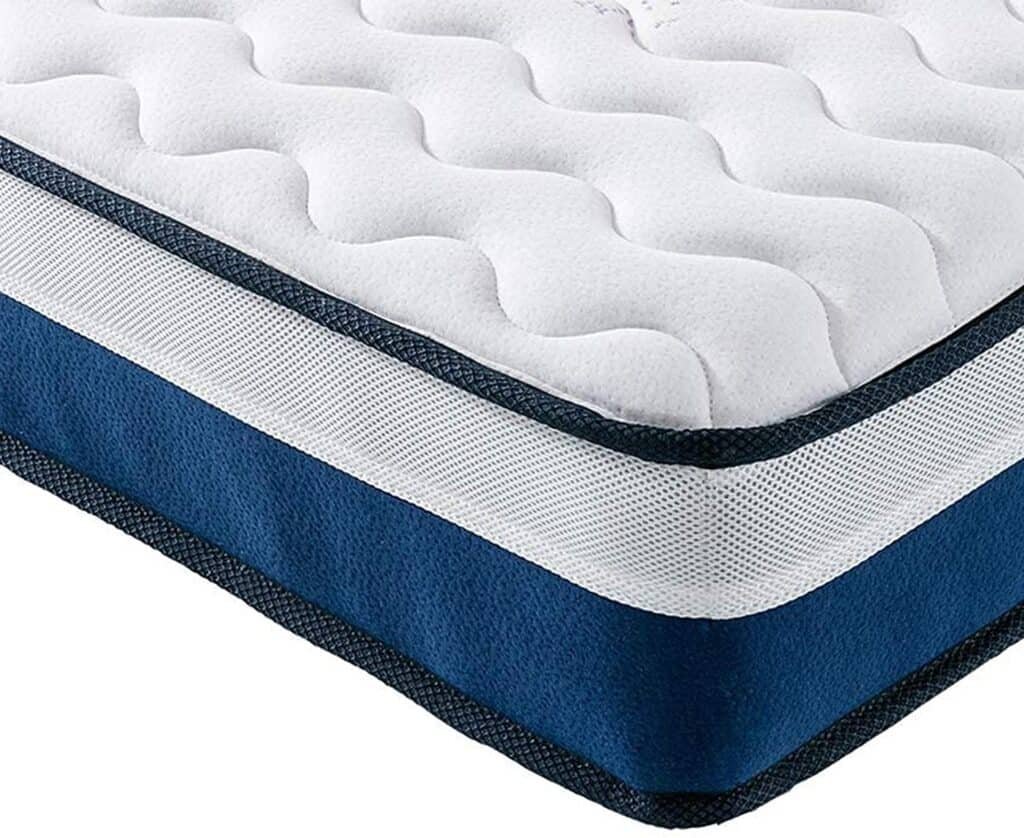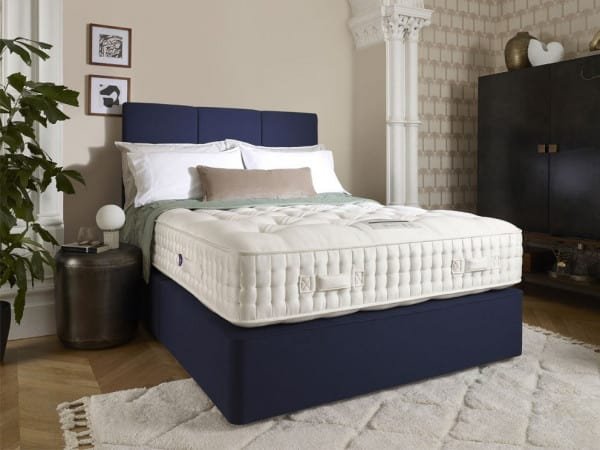Memory Foam versus Pocket Sprung Mattresses
Having the right mattress is essential when getting a good night’s sleep. However, with so many different types of mattresses on the market, knowing which one to choose can be challenging. Two popular options are memory foam and pocket-sprung mattresses.
Memory foam mattresses are known for their exceptional comfort and support. They conform to the body’s shape, providing personalized support for each individual. They also relieve pressure points and reduce pain, making them an excellent choice for people with chronic pain or injuries. Pocket-sprung mattresses, on the other hand, provide good support but are not as comfortable as memory foam mattresses. The individually wrapped coils support the body but do not conform to the body’s shape in the same way that memory foam does. There are many factors to consider when choosing between memory foam and pocket-sprung mattresses, including comfort, durability, motion isolation, temperature regulation, maintenance and care, price, allergies, and edge support. Understanding these factors can help you decide and choose the best mattress for your needs.
This article will compare memory foam and pocket-sprung mattresses. We will discuss the benefits and drawbacks of each type of mattress and provide information on the key factors to consider when choosing a mattress. Whether you are shopping for a new mattress or just curious about the differences between memory foam and pocket-sprung mattresses, this article will provide the information you need to make an informed decision.
Memory foam mattresses
Memory foam mattresses have become increasingly popular in recent years and for a good reason. Memory foam is a unique material that conforms to the body’s shape, providing personalized support for each individual. Here are some advantages and disadvantages when choosing a memory foam mattress.
Advantages of memory foam mattresses:
- Comfort: Memory foam provides a soft, comfortable sleeping surface that relieves pressure points and reduces pain. This makes it an excellent choice for people with chronic pain or injuries.
- Support: Memory foam provides excellent support for the body, distributing weight evenly and aligning the spine properly. This can help reduce back pain and improve sleep quality.
- Motion isolation: Memory foam absorbs motion, making it an excellent choice for couples who sleep together. This means that if one person moves around during the night, the other person is less likely to be disturbed.
Disadvantages of memory foam mattresses:
- Heat retention: Memory foam tends to retain heat, making the sleeper feel hot and uncomfortable at night. This is especially true for low-quality memory foam mattresses.
- Off-gassing: Some memory foam mattresses emit a strong chemical odour when unpacked. This is due to the manufacturing process and can take a few days to dissipate.
- Cost: Memory foam mattresses are more expensive than other mattresses, which may make them unaffordable for some people.
Factors to consider when choosing a memory foam mattress:
- Density: The density of memory foam affects how supportive it is. Higher-density memory foam provides more support but is more expensive.
- Thickness: Thicker memory foam mattresses are more comfortable but may be more expensive.
- Quality: Not all memory foam mattresses are created equal. Look for high-quality materials and reputable brands to ensure a lasting mattress.
Pocket sprung mattresses
Pocket-sprung mattresses are a popular alternative to memory foam mattresses. They are made with individually wrapped coils that provide support for the body. Here are some advantages and disadvantages to consider when choosing a pocket-sprung mattress.
Advantages of pocket-sprung mattresses:
- Support: Pocket-sprung mattresses provide excellent support for the body, distributing weight evenly and reducing pressure points. This can help reduce back pain and improve sleep quality.
- Durability: Pocket-sprung mattresses are highly durable and can last many years if properly cared for.
- Temperature regulation: Pocket-sprung mattresses allow air to circulate, which can help regulate body temperature and keep sleepers cool.
Disadvantages of pocket-sprung mattresses:
- Motion transfer: Pocket-sprung mattresses are not great at absorbing motion, which means that if one person moves around during the night, the other person may be disturbed.
- Noise: Pocket-sprung mattresses may make noise when the coils move, disrupting sleep.
- Cost: Pocket-sprung mattresses tend to be more expensive than other types of mattresses, which may make them unaffordable for some people.
Factors to consider when choosing a pocket-sprung mattress:
- Coil count: The number of coils in a pocket-sprung mattress affects its support. Higher coil counts provide more support but may be more expensive. Depending on your needs, you can choose a 2000-pocket sprung mattress or a model with 3000-pocket springs more suitable for heavier people.
- Gauge: The gauge of the coils affects how firm the mattress is. Lower gauge coils provide a firmer sleeping surface.
- Quality: Not all pocket-sprung mattresses are created equal. Look for high-quality materials and reputable brands to ensure the purchase of a lasting mattress.
Comparison between memory foam and pocket-sprung mattresses
When choosing a mattress, the choice often comes down to memory foam vs pocket sprung. Here’s a comparison of the critical features of each type of mattress:
- Comfort and support – Memory foam mattresses are known for their exceptional comfort and support. Memory foam conforms to the body’s shape, providing personalized support for each individual. It relieves pressure points and reduces pain, making it an excellent choice for people with chronic pain or injuries. Pocket-sprung mattresses also provide good support but may not be as comfortable as memory foam mattresses. The individually wrapped coils support the body but do not conform to the body’s shape in the same way that memory foam does.
- Durability – Pocket-sprung mattresses are highly durable and can last many years if properly cared for. They are made with high-quality materials designed to withstand years of use. Memory foam mattresses have a good lifespan but can break down over time if not made with high-quality materials.
- Motion isolation – Memory foam mattresses are great at absorbing motion, making them an excellent choice for couples who sleep together. This means that if one person moves around during the night, the other person is less likely to be disturbed. Pocket-sprung mattresses are not as good at absorbing motion, which means that if one person moves around during the night, the other person may be disturbed.
- Temperature regulation – Memory foam retains heat, making the sleeper feel hot and uncomfortable at night. Pocket-sprung mattresses, on the other hand, allow air to circulate, which can help regulate body temperature and keep sleepers cool.
- Maintenance and care – Memory foam mattresses require little maintenance and care. They do not need to be flipped or rotated like traditional mattresses. Pocket sprung mattresses, on the other hand, require regular flipping and rotating to ensure they wear evenly and last as long as possible.
Overall, memory foam and pocket-sprung mattresses have different features and benefits. The choice between the two ultimately comes down to personal preference and individual needs. Memory foam mattresses are great for people who prioritize comfort and support, while pocket-sprung mattresses are ideal for those who prioritize durability and temperature regulation. It is essential to try out both types of mattresses before ensuring that you find the right one for you. Memory foam mattresses provide exceptional comfort and support, conforming to the body’s shape and relieving pressure points. They also sounded motion isolation, making them an excellent choice for couples or individuals easily disturbed by their partner’s movements during the night. However, they can be expensive and retain heat, making them uncomfortable for people who sleep hot.
Pocket-sprung mattresses offer good support and are often more affordable than memory foam mattresses. They also provide better airflow, making them a good choice for people who sleep hot or have allergies. However, they do not conform to the body’s shape like memory foam, and the coils can create motion transfer that may disturb a partner’s sleep.
When choosing between memory foam and pocket-sprung mattresses, it’s essential to consider factors such as comfort, durability, motion isolation, temperature regulation, maintenance and care, price, allergies, and edge support. Ultimately, the best choice will depend on personal preferences and individual needs.
Why not choose a mattress that combines both pocket springs and memory foam? Here are the top 5 pocket-sprung mattresses with memory foam. Trying out different types and brands before purchasing is a good idea if you are in the market for a new mattress. Many mattress companies offer trial periods, allowing you to test the mattress for several weeks or months before deciding if it fits you. Overall, investing in a high-quality mattress is worthwhile for your health and well-being. By understanding the differences between memory foam and pocket-sprung mattresses and considering your needs, you can choose the perfect mattress for a good night’s sleep.



